Why webcams aren’t good enough
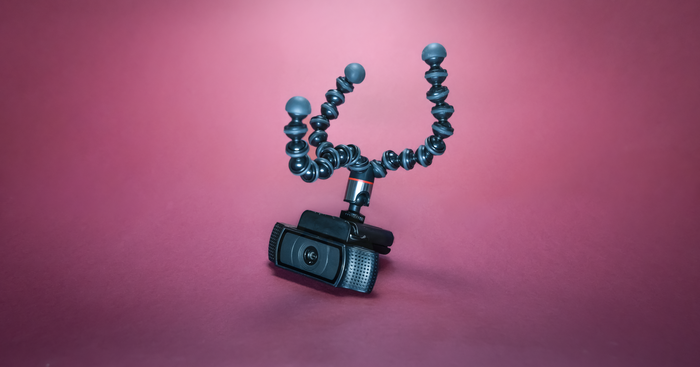
After consulting numerous webcam buying guides and reviews, purchasing a handful of the most popular models, and testing them in varying lighting situations, I can't escape the grim truth: there are no good webcams. Even webcams recommended by reputable outlets produce poor quality imagery—a significant failing, given it’s the one job they're supposed to provide.
Uneven color. Blown highlights. Smudgy detail, especially in low light. Any affordable webcam (even at the high end of affordability, $100+), uses inadequate and typically years-old hardware backed by mediocre software that literally makes you look bad. You might not notice this if you’re using video software that makes your own image small, but it will be obvious to other people on the call.
See for yourself: the video below shows the market-leading webcams (the C920, the Kiyo and the Brio) at the same time and under the same conditions, alongside an iPhone as a benchamark.
- The Logitech C920 suffers from a number of issues, most notably the exposure issues.
- The Logitech Brio struggles to keep up with movement, and seems to be applying a skin-smoothing filter.
- The iPhone Pro gives a great quality picture, natural colour, and is the only option that doesn’t struggle with focus.
Why are webcams like this? After all, small-camera technology has improved exponentially since the current crop of "best" webcams hit the market, but it's all happened in our phones. To illustrate this, I'm pitting the most popular webcams against Camo, the software that leverages the camera and imaging technology of the iPhone, iPad, and iPod touch to make you look significantly better. Even if Camo weren't in the picture, though, the output from the top-rated webcams is still lacking.
Putting them to the test
For testing, I gathered a collection of top-rated and top-selling standalone webcams, plus one cheap knockoff model (I'll let you guess which one that is). Numbers shown are the companies' suggested retail prices:
- Logitech Brio 4K Pro ($199)
- Logitech StreamCam ($169)
- Logitech C920 ($80)
- Adwaita 8 MP Ultra HD 4K Webcam ($50)
To contrast, I gathered a small collection of iPhones running Reincubate Camo, including the oldest supported model I could find; the app runs on any device running iOS 12 or later, which includes the iPhone 5s and iPod touch 6:
- iPhone 11 Pro (my everyday phone, $999)
- iPhone SE (2019 model, $399)
- iPhone 6 (2015, which I bought used and unlocked autumn 2020 for $90)
The latest iPhone models are obviously more expensive than the webcams, but they also do much more than act as cameras. While I wouldn't rule it out, I doubt that anyone is going to buy a new iPhone solely to use as a webcam. More likely is that someone would use their main phone, repurpose an older model that's no longer in active use, or buy a used model. Testing was done on a 16-inch MacBook Pro (2019 model).
A few notes on the photos: Unless specifically noted, the images were captured using the webcam's default settings. The iPhones were connected using Camo, but none of the app's adjustment tools were employed; what you see is what the camera delivered.
The room in which they were captured is in a partially exposed basement with two windows and light yellow walls. The room's lighting includes a ceiling light fixture with consumer LED bulbs sold as 5000K Daylight, and one decorative hanging lamp. In other words, it's a pretty typical room for working at home and participating in video conferences.
I also set up a pair of external 15.4-inch Dazzne Desk Mount LED Video Lights for more illumination, particularly when shooting at night; I note in which shots they were turned on. As I'll discuss later, the importance of having enough light available can't be underestimated, and it applies to all of the webcams discussed here.
The video feeds were viewed in Zoom in a private meeting, since Zoom has become the de facto standard for video conferences. Zoom and other services sometimes limit the broadcast resolution to optimize the amount of bandwidth being used, so it's likely the people on the other end of your call won't see the same image quality you do. In my testing, the performance in Zoom on a private call was comparable to viewing the video feed in QuickTime Player (choosing File > New Movie Recording), which doesn't do streaming.
Lastly, placement: All the cameras were set up above my laptop screen for easy switching between them, so you'll see slightly different angles of each model. I wasn't focused on perfect composition this time around.

Before I get into the specific webcam comparisons, let’s highlight some universal issues.
Problems with third-party webcams
Each webcam tested suffered in its own unique way, but generally speaking, the following failings were the most noticeable.
Exposure problems and hot spots: The first task of a webcam is to automatically take into account the lighting in the scene and adjust the brightness accordingly. In an attempt to ensure that the object at the center of the frame (that's you) is well-lit, the cameras usually increase the brightness everywhere else. That reasoning is solid, but if a window or lamp is in the shot, it's likely blown out to pure white and distracting to your viewers. Even in rooms that seem reasonably lit, it's also not uncommon for that light to spill onto you and overexpose features such as your forehead or cheekbones. Although I'll take a bright scene over an underexposed one every time (for reasons we'll get into), hot spots and overexposure are simply distracting.
![The 8-year-old Logitech C920 is still somehow recommended as one of the best webcams. The 8-year-old Logitech C920 is still somehow recommended as one of the best webcams.]()
The 8-year-old Logitech C920 is still somehow recommended as one of the best webcams. Color problems and white balance: Another automatic adjustment webcams need to nail is color fidelity, and this one is just as problematic as exposure. From a viewer's perspective, white balance (also known as color temperature) determines whether you look frosty-cool or orange. Am I really as rosy-cheeked as I look? Heck, is that even my actual skin color? Too often the answer is no.
![The Logitech Brio, the most expensive webcam in this comparison, tends toward pink hues. The Logitech Brio, the most expensive webcam in this comparison, tends toward pink hues.]()
The Logitech Brio, the most expensive webcam in this comparison, tends toward pink hues. Focus issues: The webcams I looked at all offer autofocus to try to keep the subject crisp, except for one inexpensive no-name camera with a fixed focal range (or, in marketing-speak, "fixed focus for consistent depth of field," which translates to "sit far enough away from the camera that you're in its sweet spot"). Some cameras do a poor job of actually hitting auto-focus, while others are slow to act. If you tend to move as you talk, the webcam can "bounce" as it locks focus, loses it, then finds it again. Again, distracting.
![The newest webcam in this comparison is the Logitech StreamCam. The newest webcam in this comparison is the Logitech StreamCam.]()
The newest webcam in this comparison is the Logitech StreamCam. Image softness: Poor autofocus can lead to a soft image, but that's not the only culprit. Some cameras just don't retain detail you expect to see, or they seem to be applying smoothing to skin.
![The texture of my skin here, shot with the Brio is more akin to turning on the "Touch Up My Appearance" setting in some video-conferencing software. The texture of my skin here, shot with the Brio is more akin to turning on the "Touch Up My Appearance" setting in some video-conferencing software.]()
The texture of my skin here, shot with the Brio is more akin to turning on the "Touch Up My Appearance" setting in some video-conferencing software. -
Low light performance: Admittedly, low-light situations are difficult for any camera, and webcams use various methods for dealing with it. However, for several reasons webcams are typically terrible when there isn't enough light; or, I should say, when the webcam thinks it doesn't have enough light.
- Scarcity and price gouging: Because of the sudden shift to remote work and school, even these supposedly "quality" webcams are still difficult to find, and being sold at premium prices. The alternative is to gamble on a mass of no-name clones.
- Software: Controls for making manual adjustments to override the auto settings are either insufficient, confusing, or nonexistent. As one example, the macOS version of Logi Capture, an application that controls some of the features exclusive to the Logitech StreamCam, is up to version 2.02 and still in beta (I have the crashes to prove it).
- E-waste: What happens to devices that don't meet expectations? They end up in drawers or landfills (or drawers and then landfills), or shipped around the world in bulk to be torn apart and recycled. (Last year saw 53.6 million metric tons of electronic waste generated.) And don't forget the packaging, shipping materials, and transportation costs to get the webcam into that drawer in the first place.
- Audio: Each of the standalone webcams includes one or more microphones to capture audio, at varying levels of competence. I'm not analyzing their audio here because you're far better off buying an inexpensive USB microphone, or even using the earbuds that came with your phone, to get better audio quality.
- Processor burden: Capturing, encoding, decoding, and streaming video in real time is a processor-intensive task. On the iPhone, dedicated hardware handles a lot of the work rendering the image and processing the video, taking those tasks from the phone's main processor. Standalone webcams, however, merely push the signal along for your computer to deal with. Logitech did once provide a hardware encoder, but these have been gradually and quietly phased out.
Now, let’s look at each webcam in more detail.
Significant flaws in the most popular webcams
Logitech C920
When the C920 is routinely cited as the best webcam for most people, I start to wonder if someone is pulling a large-scale prank, because that doesn't match with what I've seen with my own eyes. On its own, the C920 suffers from terrible overexposure, poor white balance, and fuzzy focus, even in well-lit situations.
In fact, when I increase the power of my light panels, you can see the camera working hard to compensate: the exposure is reduced, but then jumps back up again, as if it's been designed to make sure there are blown out areas at any cost.The C920 tries to balance the lighting, but it just can't do it.
Logitech C920 vs. iPhone 6 Selfie
Okay, let's do a worst-worst comparison. With most of the webcams, adding more light improved the image; adding plenty of foreground light to the subject triggered them to reduce the exposure in the background, for one thing. The C920, however, just saw more light and continued to overexpose. The white balance is all off, desaturating the entire scene.
Of the iPhone lineup, the front-facing Selfie camera in the iPhone 6 is the poorest on paper, and turned out to be the worst performer. It's terribly blown out in both the window and my face, but the white balance and contrast is much better than the C920's output. It's not my first choice, certainly, but at least I don't look green.
Logitech Brio
The standout feature of the Brio is its 4K resolution, the ability to record at 3840 by 2160 pixels. That sounds great, because we're trained to think that "more X is better," where X equals resolution, megapixels, gigabytes, gigahertz, and all sorts of other technical specifications. However, higher resolution has tradeoffs.
The general idea behind resolution is that with more recorded pixels, you view more detail and end up with a sharper image. Early HD cameras recorded at 720p resolution (1280 by 720 pixels); now, YouTube doesn't even apply its HD label to anything under 1080p (1920 by 1080 pixels). 4K (3840 by 2160 pixels) resolution is now commonplace on televisions (with 8K starting to crowd in on showrooms and online retailers).
The difficulty of higher resolution is the increased demand in processing: capturing and processing 2 million pixels per frame (1080p) in real-time requires more processing power than 900,00 pixels per frame (720p) (both numbers rounded down). 4K needs to push nearly 8.3 million pixels per frame. Video encoding schemes compress that data to a more manageable level, but because the cameras do not include dedicated encoding hardware, that work is performed by the computer's processor, putting more strain on the system.
To set the Brio to record in 4K mode, you need to run the separate Logitech Capture program. On my less-than-one-year-old MacBook Pro, switching to 4K introduces significant lag, up to 4 seconds, making a video chat unworkable. Also, to get that 4K stream into your video conferencing software, you need to specify Logitech Capture as the video source. But for our purposes here, the more important consideration is bandwidth, because a 4K livestream is a lot of data going into a pipe that is automatically compressed and reduced in transit by the companies hosting the services. So, ultimately, unless you're recording something local, 4K is wasted.

As noted earlier, the more glaring problems with the Brio are how it blows out bright areas, renders colors oddly, and how it seems to be smoothing skin.
In normal or very low light, the Brio image gets noisy and loses detail. It includes a feature that Logitech calls Rightlight 3, or "Rightlight 3 with HDR" that is intended to do a better job of balancing gain and noise. However, nothing in the Mac versions of Logitech's settings software mentions Rightlight, and there's just a single HDR switch that makes a very small difference when it's turned on. The hardware also includes an infrared sensor that is used only under Windows 10 for its Windows Hello unlocking feature.
The more light I could throw at the scene, the better quality I got, particularly in terms of detail. That meant turning my video lights up to 65 percent intensity, which is bright enough to make me squint and feel like I'm in a studio. I have a hard time believing most people would create a setup like this for calling into meetings at work.
To create the image on the right, I had to turn the video lights up to 65 percent, which is not an ideal or, I suspect, common solution for most people.
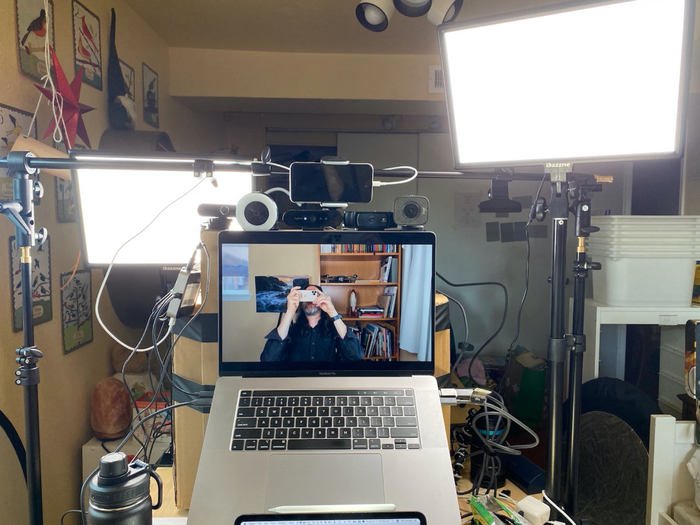
Logitech Brio vs. iPhone 6
One important characteristic of the preceding photos is how much light was in the scene. To our eyes, the daylight scene illuminated by window light looks pretty natural. But to the cameras, the scene was underexposed, which is likely why the Brio shots above are somewhat dim and lack shadow detail. Adding more light to the foreground makes a big difference.
For the next comparison, I turned on the video lights, facing me, at about 10 percent of their maximum output and a color temperature setting of 5000K (to match the temperature of the ceiling bulbs, although the room's lights were off). The Brio's image is certainly better than the one earlier, although the window is still a white rectangle (but this time with some hint that something is outside). The highlights on my face are better, though the definition in my beard is still smudgy. With more light, we also see that the skin looks smoother and has an odd pink flush to it. White balance overall is improved.
Up against the Brio in the same lighting situation is the 2019 iPhone SE (informally referred to as the iPhone SE 2). The color balance is better, there's more definition in the window—though it's still mostly blown out—and the beard looks more textured. My face looks a little too red, though.
Increasing the power of the light panels makes a big difference; and these photos feel like the cameras are in situations they're more comfortable with. We see some detail through the window in the Brio's photo, the lighting on my face is more balanced, and the background colors seem better. However, my face looks even more pink and processed. The iPhone SE image is also much improved. Although my face still looks a little oversaturated, there's more visible texture to my skin and beard, and overall the colors are better.
Logitech Brio 4K Pro vs. the iPhone 11 Pro
These shots were made using just the light coming in from the windows at the left and right edges of the picture. It was a foggy morning, so the light was naturally diffused. Areas that stand out in the Brio image are the completely blown-out window at left, and the generally fuzzy image quality overall. This is a case where my salt-and-pepper beard is helpful, because in this case it shows that the camera is bunching the hair into a pixelated mass. The colors are also muted, turning the yellow walls into a pasty eggshell color.
In the image from the iPhone 11 Pro Wide lens (the default "1x" view), there's definition in the window. In fact, you can see that it is a window, and make out the deck and fence outside. (That's due to the iPhone's continuous HDR processing.) The color on my face looks more natural, if a bit red, and there's well-rounded shadow detail from the light coming in at the right side of the frame. The white balance is better in the iPhone version: the walls are the right shade of pale yellow, and white areas like the window frame and books on the shelves look white, not too warm or cool.
The Brio also has an HDR option, which you can enable or disable using the Logitech Capture app (a free download) that lets you configure settings. However, the feature is basically useless.

Logitech StreamCam
Considering the StreamCam is the newest webcam of the lot, I was expecting more improvements to image quality compared to the other Logitech models. However, it exhibits many of the same issues: blown-out whites, a surprisingly soft image in even moderate lighting, and some of the same appearance of skin smoothing. The camera's f/2.0 lens allows in extra light, but it doesn't seem to make a dramatic difference. The StreamCam feels like a non-4K version of the Brio, with a few features thrown in if you use the Logitech Capture alongside it.
Those features aren't compelling for our purposes. The StreamCam includes a sensor that indicates whether it's in landscape or portrait mode—which shows up as sideways video in most applications. It also includes image stabilization...for a camera that is mounted and doesn't move. One potentially useful feature is auto-framing, which (digitally) zooms in on your face and recomposes the shot as you move, keeping your face centered. It may be nice to track one's face in a small window when streaming a video game, but in practice, it's unnerving and draws attention to the camera moves, not the subject.
Logitech Streamcam vs. iPhone 6
In this comparison, I've pitted the newest webcam of the group, released in February 2020, against the oldest iPhone model, the iPhone 6 released in 2015.
Again, with the standalone webcam, we see the window in the back is all white, and the light from the other window is also blown out on the side of my face. The color is muted, and there's not much definition in my beard; in fact, I look slightly out of focus.
The iPhone 6 version suffers from some of the same problems with its five-year-old camera. The window is blown out, and the shadows are fairly dark. However, the highlights on the side of my face are more controlled, the white balance is much better, and to my eye, the increased contrast gives the image more depth. The iPhone 6 image isn't as good as the iPhone 11 Pro, but the camera and imaging technology in the latter are orders of magnitude more advanced than the iPhone 6's sole rear camera.
Adwaita 4K USB 2.0 Webcam
I can't say whether this inexpensive 4K webcam is representative of the market, but based on the pattern of many other consumer electronics devices, my suspicion is that several companies use the same components and rebrand their products. This device has a narrower lens than most, at 5.6mm, which means you end up cropped within the frame (or you need to move the webcam farther away from you).
The image sensor is capable of capturing 4K video, as I discussed earlier, that resolution doesn't make sense for video conferencing. The image is grainy, and although it does a better job than the other webcams at providing detail in low-light situations, the white balance is usually off. The Adwaita lens is fixed focus.
The Adwaita webcam offers no settings software, leaving it to whichever capture application you're using, if such controls are available.
What the pros use
Setting aside issues of cost and availability for a moment, what would be the best camera for getting amazing video for your calls? For only $15,000 you can get onto the ground floor of a RED camera system, and work your way up from there.
More realistically, many video creators use DSLRs or mirrorless cameras with larger image sensors such as Sony's Alpha series, paired with quality lenses that feature large apertures (and therefore shallow depths of field) for more control over light and the softness of the background. Those represent investments starting around $600 and can run to a couple thousand dollars depending on the body, lenses, and hardware such as an HDMI Capture Card to connect it all to the computer.
Depending on how you need to present yourself on video calls, however, that can be expensive overkill. The technology in iPhone models already allows for incredible levels of quality, as shown in the video below.
Using an iPhone as a webcam is easily the best option without dropping an excess of $1,000 for professional camera gear. Using the iPhone you already own, or a recent hand-me-down, a moderate investment in lighting, and Reincubate Camo, you can get excellent results and none of the frustration and hassle that accompanies standalone webcams.
Why are webcams so bad? (And why they won’t ever improve)
Webcam companies have done well with aged—and therefore less costly—components for years. The C920 is still cited as one of the best webcams on the market even though it was first introduced eight years ago in 2012. The Brio and Razer Kiyo hail from 2017, the StreamCam came out early in 2020, and you can see the results above.
Two main factors currently hinder serious webcam innovations, one a technical limitation and one a business shortcoming.
As with all photography, the way to create better images is to capture more light, and the method of capturing more light is to use larger image sensors and larger lenses. That's why a consumer DSLR or mirrorless camera produces much better images than a webcam.
Primarily this is about size: webcams are designed as small devices that need to fit onto existing monitors or laptop lids, so they use small camera modules with tiny image sensors. These modules have been good enough for years, generating accolades, so there's little incentive to change. The StreamCam appears to have a better camera and sensor, with an aperture of f/2.0; aperture isn't listed for the other cameras.
Contrast this technology with the iPhone, which also includes small camera modules by necessity to fit them into a phone form factor. Apple includes better components, but just as important, incorporates dedicated hardware and software solely to the task of creating images. When you're taking a photo or video with an iOS device, it's processing the raw data and outputting an edited version of the scene.
Originally, Logitech's higher-end webcams, such as the C920, also included dedicated MPEG processing hardware to encode the video signal, but removed it at some point (without changing the model numbers or otherwise indicating the change except for an undated blog post). The company justified the change because of the power of modern computers, stating, “there is no longer a need for in-camera encoding in today’s computers,” but that just shifts the processing burden to the computer's CPU, which must decode raw video instead of an optimized stream. It's equally likely Logitech made the change to reduce component costs and no longer pay to license the H.264 codec from MPEG LA, the group that owns MPEG patents.
That brings us to the other factor keeping webcam innovation restrained: manufacturers aren't as invested in what has been a low margin business catering to a relatively small niche of customers. Apple's research and development budget over six months is more than Logitech's gross yearly revenue, because Apple realized that the iPhone's camera could be a serious competitive advantage.





























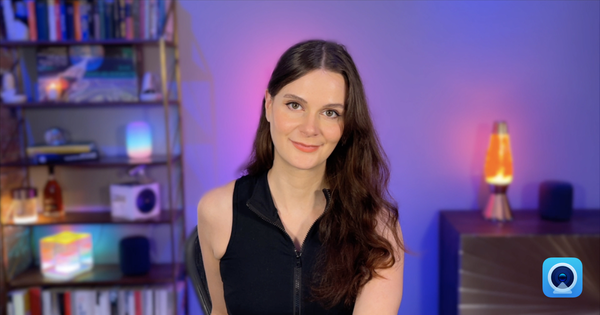
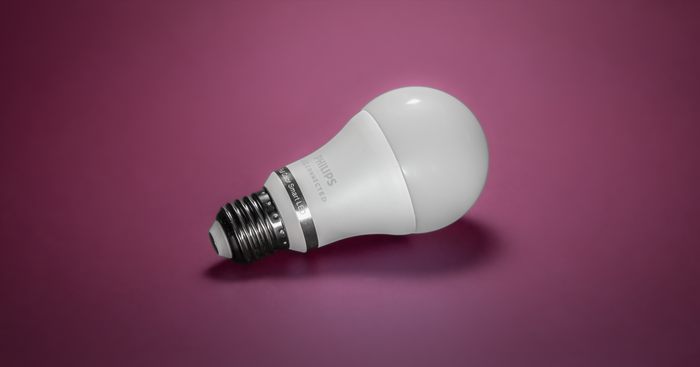
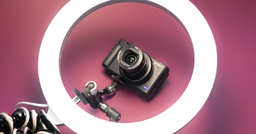
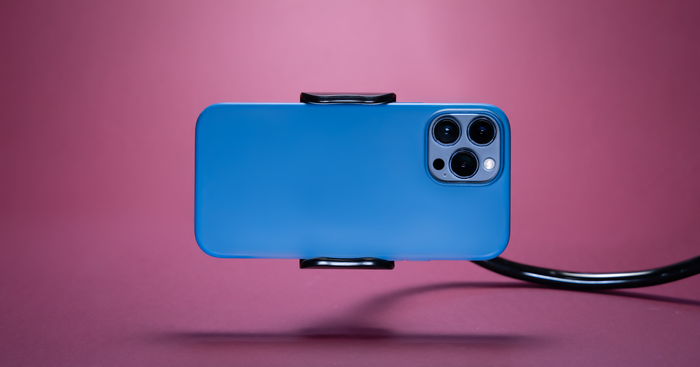

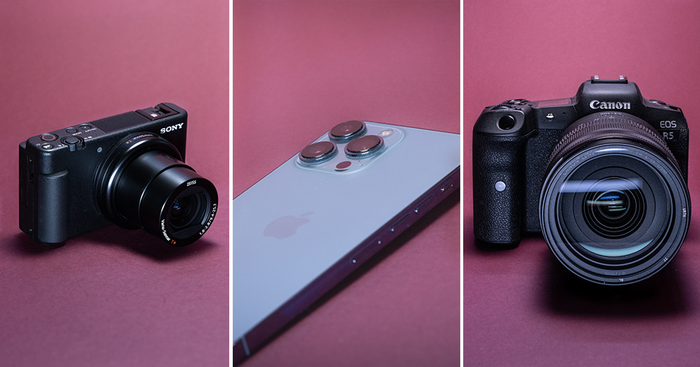

by Silke
Unfassbar guter Artikel! Und ich hätte ihn so gerne gelesen, bevor ich alle meine Tests gemact hatte:-( Ich habe ein iPhone SE (nutze als Software die Epo Cam Pro) und dachte mir, ich kaufe mir jetzt mal eine ordentliche Kamera. Habe mich dann im Sinne Preis/Leistung für die Logitech C920 entschieden. Und war von Anfang an damit unzufrieden - v.a. wegen der Überbelichtung. Hab dann die Software runtergeladen, in den Einstellungen ohne Ende Varianten ausprobiert und auch in zoom (soweit das möglich ist). Das Ergebnis war: maximal unbefriedigend. So denn: Konsequenz: Logitech 920 schick ich zurück und bleibe bei meine "alten" iPhone SE :-). Positiver Effekt: Günstiger geht es nicht (iphone lag eh bei uns rum). NOCHMAL DANKE AN DEN TOLLEN, AUSFÜHRLICHEN UND VERSTÄNDLICHEN BERICHT! (spart hoffentlich Geld und Material für "sinnlosen" WebCam-Kauf).
by RobL.
Why is everyone puzzled? Yes I had a 2012 or 2013 laptop, had a great built in webcam. Now they all stink. This is a marketing decision: corporate greed. They decided to built them with cheap cameras, that's all. It either got too expensive (really they found a way to do it cheap, the hell with quality) and everyone is stuck. It's standard operating business procedure. Like food nowadays. They found cheaper and cheaper ways to raise/produce it, so the hell with the quality. And you pay more. Whole Foods did it to its fine quality sirloin and hamburger. You're simply stuck.
by Monty Cantsin
A parallel story exists for audio: it's impossible to find a device for a computer that uses multiple microphones to actively cancel background noise, like pretty much every flagship phone does. My old Pixel 3 phone had an extra pinhole mic that allowed me to stand next to a lawnmower without the person on the other end of the call noticing. It would subtract out the external noise from the pinhole mic, leaving just my voice coming through clear on the main mic. Not sure why this is so hard for someone to sell as a standalone device.
by Trean Ducwort
The actual problem lies in the fact that nobody in the actual camera industry makes web camera houses with a good sensor, so you can put any of their lenses on and actually get photographic quality. Sorry but Logitech is not a camera company and their plastic lenses and tiny sensors are still stuck in the 80ies.
by Daniel D Malone
Great article and detailed. I might add that the video card being used in the computer is also a factor. I didn't see it mentioned but I apologize if I didn't see it.
by Yann
Great article. I am also very surprised how overrated the c920 is. Also I noticed that the same webcame reacts differently depending on the software: the result using Logitech App is generally correct. Using MS Teams, the image gets blurred without any option to handle it!
by David Arditti
I bought a Brio, as pretty much the most expensive webcam you can get, hoping it would be a bit better than the cheaper webcams, but it isn't really. Apart from the image quality failings mentioned here, the most frustrating aspect is the software (which I've only tried on a Mac). It continually defaults to a state of terrible over-exposure in the conditions I use it in, and, worse, to 720p. Why on earth do Logitech do this? It should be obvious to them that people buying their most expensive camera will want to normally create HD video, but the software still keeps defaulting to 720p. So all my projects end up with a mixture of 720p and 1080p, when I remember to switch that switch again.
by Maximilian Cascone
Great article! Can you do baby monitors next? They universally suck.
reply by: Reincubate Support
Thank you! Is there a particular monitor you'd like us to look at?
by Mark P.
Found this via Daring Fireball and just wanted to thank you for this incredibly comprehensive article. Not having a lot of technical knowledge about cameras/video, I ordered the highly recommended Logitech C920 and thought I was going insane when it didn't hold a candle to a quick comparison with my iPhone 8... not to mention pulling my hair out for nearly a full day installing and uninstalling Logitech's various webcam apps before finally realizing the cam worked much better without them.
by Snoop
Thanks for this lengthy review. I finally understand why that market still looks so bad even today!
This is really absurd and not just because chips got much better for much cheaper but because in a world caught in the middle of the major pandemic, no company came with a great product. It is AMAZING and stupid. Everybody sees everyday how bad the image is... and i can't believe there is no market between a 100$ devices and 2K$ to 15K$.
Do you remember the iSight from Apple introduced in 2003??? The design was great and the quality for the time was excellent compared to competition for a 149$ (cheap for an Apple product). Image quality was great and speed amazing thanks to a FireWire connection (400 Mbit/s in 2003!). I kept it until 2010 or so.
Anyway, I'm puzzled and can't understand why manufacturers don't do something better in this period, honestly.
Thanks again for putting this up!
by Snoop
Thanks for this lengthy review. I finally understand why that market still looks so bad even today!
This is really absurd and not just because chips got much better for much cheaper but because in a world caught in the middle of the major pandemic, no company came with a great product. It is AMAZING and stupid. Everybody sees everyday how bad the image is... and i can't believe there is no market between a 100$ devices and 2K$ to 15K$.
Do you remember the iSight from Apple introduced in 2003??? The design was great and the quality for the time was excellent compared to competition for a 149$ (cheap for an Apple product). Image quality was great and speed amazing thanks to a FireWire connection (400 Mbit/s in 2003!). I kept it until 2010 or so.
Anyway, I'm puzzled and can't understand why manufacturers don't do something better in this period, honestly.
Thanks again for putting this up!
by Ben Smith
Thank you for the great article. How would you expect the Mevo Start to compare as a webcam?
reply by: Reincubate Support
Good question! We've not benchmarked one yet. Few thoughts:
The comparison videos that Mevo publish make it appear better than any Logitech, but still quite a way under the performance you'd see from a modern iPhone. The videos look saturation-boosted, which tends to make things look great but not always very lifelike. Their webcam app is Mac-only, and still in beta.
The Mevo Start is built around the Sony IMX307, which is a ~$25 (retail, cheaper in bulk) image sensor, so this makes sense: that's a better bit of kit than you'd get in a webcam, but it's not on par with Apple's technology.
by Dave Barnes
If you were a pundit who appears regularly on cable TV shows (and, therefore has plenty of money) what setup would you buy?
reply by: Reincubate Support
That's a big, nuanced question, Dave! Jeff Carlson is hard at work putting together a detailed iPhone vs DSLR & mirrorless comparison piece, and that's going to answer is fully. It should be out in a month. In the meantime, here's a quick take on this...
If money were no object, we'd use a RED Monstro 8K camera. They're $80,000 without the lenses and the various accessories you'd need, but anything you point them at looks incredible. You'll like the footage so much that you'll find yourself thinking... maybe I need another one of these.
You'd probably want 4 - 6 big lights with diffusers, filters, etc., and multiple mics. There are a lot of strong opinions in the industry on light and mic brands, but broadly speaking setting them up well and having the right environment for them is best. You'd easily spend north of $100k on this setup, and you'd need some people to help you with it.
A more measured step down would be circa $4,000: some Godox SL-60 lights, a RØDE VM-NTG mic, or an EV RE-20 with a DBX286 pre-amp for audio. For a camera, we might use a Sony Alpha A6600 with an f/1.4 lens.
Anything below that level closes in on iPhone-equivalent. For instance, here's Scott Hanselman comparing his A6000 to an iPhone 12. You'd spend a few thousand bucks on that.
A few further thoughts:
We have a lot of users that do appear on TV with some frequency. Reporters, congressional candidates, entrepreneurs, etc. Every now and then we share their experiences on our Twitter account @reincubate.
An amazing mirrorless gives great image quality but isn't without other drawbacks. Cables, complexity, setup, heat, bad software, lack of remote control, and so on. Some people are totally wedded to DSLRs, but there are certainly users out there that have the $5k+ setup but still use Camo for some things, because it's easier to configure and tidier on your desk!
by Ric
What do you think of the new Avermedia PW513 webcam? This is based on a much more modern Sony Exmor Sensor with a higher dynamic range and I think addresses most of the points you raised. It's even dropping in price now to semi-reasonable levels.
reply by: Reincubate Support
We've not tried one of these yet but the reviews are extremely bad, even after the update. Big graininess, bad handling of light. It doesn't look like a very polished product, with a cheaply printed logo on the front of it, either.
If we see anything to suggest it's a contender we'll get hold of one of these for our next update, but the reviews it's got make it seem like a budget cam with a non-budget price.
by John Appleseed
I know it's a different type of device but can you please test the Facebook Portal 10 inch (1st gen)? Apparently it has an impressive 13 megapixel camera that's also 140 degrees wide angle. It's available on eBay for around $80 and only the first gen model or the 15 inch Portal Plus has USB-C video out too, to a bigger screen. I want to know how it compares to the Logitech BRIO and the iPhone SE and the iPhone 11 Pro.
reply by: Reincubate Support
Good question. We got one of these for the office (before we started working from home). The short version is that the automated panning is has is pretty cool. But the colour balance is weird (very vibrant, poor colour representation) and it really struggles with low or average light, leading to a lot of graininess. It does well with exposure though, and we found it interesting what whilst it's not amazing, it largely suffers from a different set of problems to conventional webcams.
It's a great choice to send to less technical family members, but it's not going to make you look good on a professional call.
by CT
I agree wholly. I used to use Logitech C920s for televising Vex robotics tournaments. A C920 on a lighting tripod overlooking each field of play connected to a Raspberry Pi (used Pi 2Bs the first few years) strapped to tripod post powered by a PoE dongle, and simply using gstreamer to take the h.264 stream from the USB and sent it RTP to the video mixer. For less than $100 for each field of play, had great picture all run off a single Ethernet cable.... when we went to three fields of play and I went to add a camera, I was disappointed in the new Logitech C920 that no longer had the H.264 stream. Even going to the Pi 3 to handling encoding, the image on that one was never as good as the older C920s. I think it is just Logitech getting cheap.
by Anthony
The exception this trend: document cameras. They still have onboard processing, sometimes with built in LEDs, exposure/zoom buttons, and often better sensors than smaller webcams; a good example is the IPEVO line. Granted, they don't clip on to your computer, but the adjustable arm can be pretty convenient as well. The only drawback is that because it doesn't clip on, looking at your screen and looking at your camera aren't always the same thing; but depending on the setup, you can just have the camera peek over the top of the monitor.
reply by: Reincubate Support
That's a good point. There are some good document cameras ("visualisers") out there, although you're generally looking at $500 - $1,000 for a decent product. An older model iPhone would be most cost-effective, but the fact that a visualiser is pre-assembled and comes as a single unit can be helpful.
by Moby Disk
Charlie Hayes is correct. Old cameras compressed the video to save USB bandwidth. But doing that both increased the CPU burden and reduced the video quality. The CPU or GPU must decode the video to display the stream. And unless you are saving the video in the exact format that the camera sent it, the CPU has to decode and re-encode the stream. That's especially important for streamers who are removing a background and overlaying their video over a game stream and muxing the audio from a standalone microphone. So the cameras compression hurt more than it helped.
reply by: Reincubate Support
There's certainly a benefit for pro users in not encoding. As you say, it saves the need for a decode and re-encode in the cases where people are manipulating the stream. The downside is that that'll benefit a fairly limited range of use-cases: if you just want to plug the thing in and stream it's worse, because those users wouldn't have the need to re-encode, and it'll put a bunch more load on their system.
Thinking this through is one of the reasons we do all the processing on the iOS device for Camo: by the time it gets to your Mac or PC, the work is done. It only needs to decode. It makes sense that there might be a future option to stream raw frames for users that are expecting to manipulate or re-encode the feed, though!
by Player 16
What about using that drone as a web cam? How would that look?
reply by: Reincubate Support
Ooh, great question! Which drone would you like to see us draw a comparison to?
by Frederico
I’ve been wondering if a GoPro camera is a good option, as it obviously offers great versatility for other uses. Can it be used as a webcam?
reply by: Reincubate Support
They sure can. We cover them here. Not as flexible as an iPhone in terms of the adjustments, and the software is a bit grisly, but the image sensor is a huge step up from any purpose-built webcam.
by Rick
Thanks for this article. I've wanted to start streaming some of the making I do, which meant I went out and bought a couple of Logitech C922x Pro cameras. One was intended to be mounted over my lab bench pointing down. The results were abysmal. The bench is well-lit, and yet darks were black voids and lights were blown out.
Asking around, I learned most people use some form of DSLR or mirrorless camera. A smaller subset of the available ones can stream over USB (and probably smaller still with the low latency needed for live streaming). They're all $600+.
Then the new Raspberry Pi HQ camera caught my attention, and I started looking at industrial USB cameras. Eventually I found a cheap Chinese import. The advantage to a C/CS-mount camera is that there are a lot of interchangeable lenses available, some quite inexpensive (quality remains to be seen). But more importantly, I can manually control focus and (optical) zoom, a real boon when shooting my bench. Even my old iPhone can't offer me that.
This particular camera (and other cheap ones I've seen) are UVC-compliant, meaning most OSes support them out of the box. I tried this one briefly, and it out-performed the Logitech with the stock configuration, but latency is not as good (still passable, if you don't buffer in OBS). There's some source code out there for adjusting camera parameters on macOS, I'm gonna write a little utility to access those and see if I can improve it.
All that long-winded comment to ask: mind comparing this camera to your others? Thanks!
reply by: Reincubate Support
Thank you. We'll look at that in detail that in when we do the next update. It looks like the larger sensor helps it handle light better than the Logitech 4K. From the sample images, it looks like it's capturing a little like an iPhone 6 — ie. much better than a Brio, but without the image performance improvements we saw in subsequent generations. (The iPhone 7 was quite a step up.) Coming unbranded from an anonymous reseller, it's unlikely to be getting close to a modern iPhone!
by Charlie Hayes
I suspect the reason to encode the video in the camera is less an effort to save the computation from the computer and more a requirement to get through the limited USB 2.0 bandwidth.
reply by: Reincubate Support
In part, yes: USB 2.0 can't handle 4K uncompressed, but USB 3.0 can. It's hard to imagine many computers that pre-date USB 3.0 can handle 4K anyway. It still looks like a cheap move to cut corners!